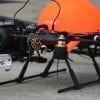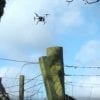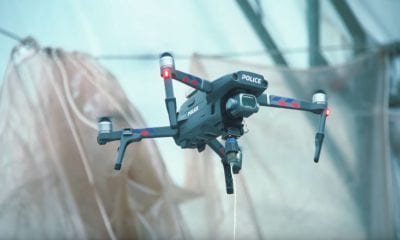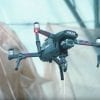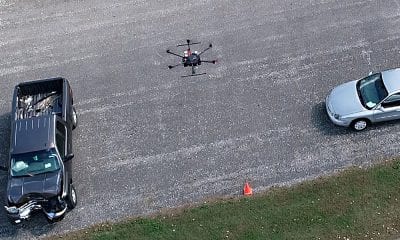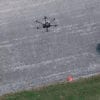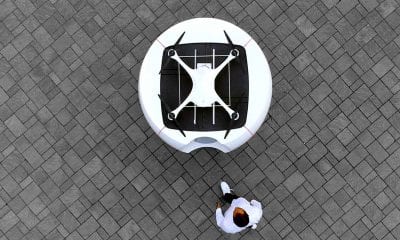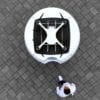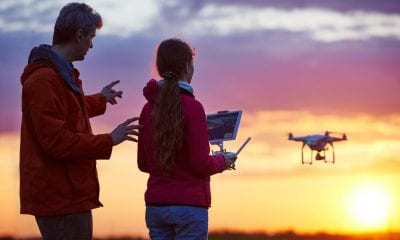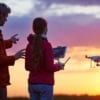
Drone Hive
Drones in Law Enforcement
Drones are being used by law enforcement on a fairly regular basis. Drones are being used in a wide range of areas – from tracking car thieves to preventing vandalism, from monitoring illegal doping in horse racing to surveillance after the recent Las Vegas shooting. Drones are also being talked of being used in an offensive situation, with weaponised drones the potential next step.
The Drone Advantage
What makes drones an attractive proposition for law enforcement agencies? Surveillance or monitoring illegal activities require clear visuals, for proper identification and for the data to be used as evidence. Drones fitted with advanced cameras (optical or thermal) and zooming capabilities provide the agencies with a wide array of options, in terms of operational usage and flexibility.
Drones can access places that may be remote or difficult (too high or dangerous) for humans to access. Additionally, drones can provide live imagery or continuous footage for a length of time, depending on the storage capability of the device/network. This allows for optimum utilisation of other scarce resources. Drones fitted with the right equipments can also provide superior surveillance at night.
Aerial zoom cameras allow drones to be used at a safe distance from the threat being investigated. Thermal imaging cameras allow drones to be used at night, while also providing heat signature detection capabilities. GPS capabilities provide easy location reference and measurement of the area to be investigated.
Manned helicopters and fixed-wing aircraft can cost in the range of $500k-$3m, while operating costs tend to be in between $200-$400 per hour. On the other hand, drones can cost up to $15k initially, while operating costs are a fraction of the costs associated with helicopters and airplanes.
Multiple drones offer many vantage points of the situation with very little risk due to their small size and maneuverability. However, the real benefit to police departments is the ease of use and officer safety.
Deploying Drones
So, where or when are drones typically employed by the security or law enforcement agencies? Drones fitted with cameras allow officials a better viewpoint at times when having ground personnel may seem to be too risky. An aerial viewpoint also allows improved recreating and understanding of accident or crime scenes.
A few scenarios where drones have proved to be useful and are being frequently put to use:
- Search and rescue: Drones can cover large areas of land in a short time and can spot missing subjects using thermal imaging, even during night time. The speed of drones proves advantageous when time becomes a critical factor.
- Crime scene analysis: Drones allow accurate mapping of a crime scene to provide further details after the initial investigation. Drones can reduce photographer time, while the images captured by the drones can be used to analyse the crime scene.
- Active shooter scenario: The presence of drones in an otherwise risky environment allows law enforcement personnel access to the real time situation, allowing them to assess the situation before taking further action.
- Traffic collision reconstruction: This is done using pictures taken from drones and 3D rendering of the crash site through software. This allows for quick and efficient progress in the investigation.
- General surveillance: Drones offer a bird’s view scouting of an area, providing standard surveillance without being spotted or compromising safety.
- Crowd monitoring: Useful in large gatherings, drones may be used to provide firsthand information of potential problems, identify troublemakers and track suspects without endangering innocent bystanders. Drones can help augment ground team, providing a wider area of surveillance.
- Bomb inspection: Both ground-based robots and aerial drones can be used to investigate suspicious packages. Drones provide an initial assessment of the situation, while ruling out potential threat factors.
Adoption of Drones in Law Enforcement
Law enforcement agencies have been testing drones since 2007. United States, the UK and Germany have been in the forefront of trying to adopt this technology. The first documented use of drones in police search work date back to 2005. Drones have been used by the U.S. Customs and Border Protection to patrol the US border since 2005. The agency reportedly has plans to make use of armed drones.
The adoption of drones has accelerated in the last couple of years. In the US, reportedly 167 police and fire departments bought drones in 2016, double the number in 2015.
The more popular drone model systems among law enforcement agencies include the Inspire 1 V2.0+ Zenmuse XT, Matrice 100 + Zenmuse XT + Z30 and Matrice 210 RTK-G + Zenmuse XT and Z30 Zoom.
The Privacy Debate and Regulations
The increasing use of drones has raised concerns for lawmakers, with calls for legislation mandating prohibition of use of drones unless the government first obtains a warrant.
Drones are powerful surveillance tools. They carry camera systems that are capable of license plate scanning and thermal imaging, as well as advanced communication systems and other sensors. Drones, like any other instrument, are susceptible to misuse. This has led to questions on the legality of use of drones as an instrument for surveillance, as the same drones can easily be used for spying or invading the privacy of individuals. In 2012, the FAA in the US released a list of all public and private entities that applied for authorizations to fly UAVs domestically.
Privacy advocates have called for laws and regulations to establish both privacy protections and greater transparency regarding the use of drones or UAVs to gather information about individuals.
US residents have few legal privacy protections from aerial surveillance conducted using drones, with the Supreme Court holding that individuals do not have the right to privacy from police observation from public airspace. However, thirteen states in the US have enacted laws regulating the use of drones by law enforcement, with eleven requiring a warrant before use a drone.
In the UK, regulations were introduced in 2010 that mandated licensing requirements for any aerial surveillance by unmanned aircraft, notwithstanding the size of the drone.
What Next
While the debate on privacy issues versus the need for surveillance is likely to continue for some time, it is hard to deny the fact that drones have become an important part of law enforcement agencies. It remains to be seen as to how law makers across the world address the public perception of police drones as instruments to spy on citizens.
However, one cannot but reiterate the growing importance of drones in law enforcement. They provide real-time situational updates and significantly improve the safety of police officers and other first responders. With advancement in technology and innovation, drones are likely to get wider acceptance in law enforcement.


